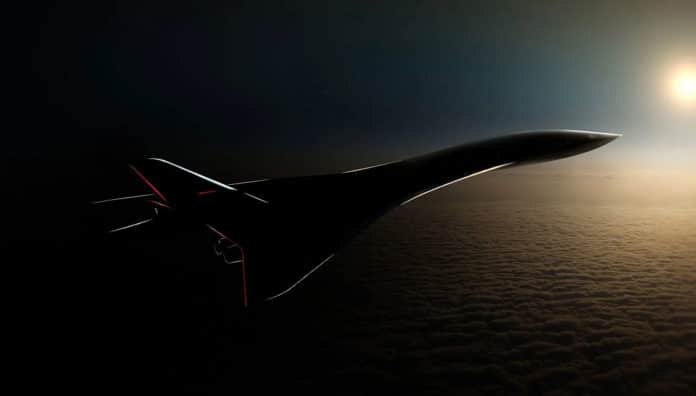An American aircraft manufacturer Aerion has released the first glimpse of its next aircraft, AS3TM, a Mach 4+ commercial airliner. It is built upon the AS2 supersonic business jet to bring Aerion’s innovation to commercial air transportation.
The AS3TM should reach speeds of Mach 4 (somewhere over 4,800 km/h or 3,000 mph) – thus entering the category of supersonic airplanes. It is being designed to transport up to 50 passengers at a range of up to 7,000 nautical miles (12,964 km/8,055 miles).
The company plans for the AS3TM to incorporate revolutionary advances in technology to improve efficiency and reduce the environmental impact of supersonic flight. The supersonic airliner is targeted to take to the skies before the end of the decade.
Aerion’s pursuit of faster point-to-point travel will begin with the launch of the AS2 supersonic business jet, which will commence production in 2023. And if all goes according to plan, the hope is that it will be available for commercial flights in the second half of the decade.
“At Aerion, our vision is to build a future where humanity can travel between any two points on our planet within three hours. Supersonic flight is the starting point, but it is just that – the beginning. To truly revolutionize global mobility as we know it today, we must push the boundaries of what is possible,” said Aerion’s Chairman, President & CEO, Tom Vice. “The AS3TM forms the next step in our long-term technology roadmap and will bring Aerion’s high Mach flight capability to a broader audience; we look forward to sharing more on our design later this year.“
Earlier this year, Aerion expanded its partnership with NASA’s Langley Research Center. The company said it plans to accelerate “commercial high-speed flight and faster point-to-point travel, specifically studying commercial flight in the Mach 3-5 range (about 3,700-6,200 km/h)”.
Further details about the new Aerion AS3TM will be unveiled in late 2021.
Apart from Aerion, another startup that promises in this regard is Boom, which has already presented its prototype. Virgin Galactic also presented a design, although there is still a long way to go before we see it come to fruition. Finally, NASA has one of the strangest designs of all.
